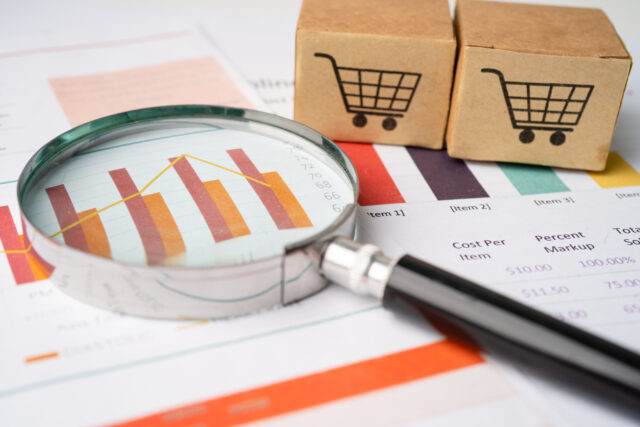When it comes to the lifecycle of a particular product in the industry, there are several important stages that contribute to the number of sales to the end consumer.
One of the key strategic stages of this process is trade marketing, which aims to enhance distribution and sales channels.
The way a consumer encounters products at points of sale, for example, influences their final purchase. In many cases, it even ensures a sale that the consumer initially did not intend to make.
In Brazil, the industry sector increasingly lacks skilled trade marketing professionals who can translate marketing strategies into actions that result in positive sell-in and sell-out figures.
The highly competitive market and increasingly demanding consumers require professionals to have the necessary knowledge of trade marketing tools in order to achieve the best results for the industry.
But what does this field of work involve? Do you know what the main tools are to assist you in the strategic trade marketing process?
Follow below for an explanation of trade marketing and which tools are useful for creating an effective strategy with solid foundations.
Whats is trade marketing?
When a consumer decides to purchase a product, a series of factors influence that buying process: their relationship with the brand, the product's placement on shelves, pricing, among others.
Given this, it can be said that the relationship between the industry and its distribution channels also influences consumer purchasing decisions, as the aforementioned factors also depend on good fluidity between the links in the supply chain.
Considering these and other elements involved in optimizing and enhancing sales and distribution channels, the trade marketing professional comes into play.
The trade marketing manager ensures strategic planning focused on the shopper, taking into account product distribution planning, relationships with channels, and merchandising management.
Therefore, trade marketing encompasses a set of strategies and actions aimed at improving sales performance through the enhancement of distribution channels.
The trade marketing professional also plays a crucial role in properly planning resource allocation for executing strategies. Marketing actions represent an investment that, if poorly managed, results in unnecessary expenses for the industry.
Working as a manager in the trade marketing sector involves significant responsibilities, as this professional often serves as the bridge between the industry’s strategies and its distribution channels.
By placing the consumer at the center of marketing efforts, effective trade marketing operations lead to increased sell-out figures, improved relationships with distribution channels, and enhanced connections with consumers.
Trade Marketing Tools
As we know, trade marketing plays an extremely important role in increasing sell-out figures through distribution and sales strategies.
However, when creating trade marketing strategies, the manager needs to consider a range of tools. It’s essential to define which ones are being adopted, which are the most suitable, and which errors need to be corrected.
Conocer estas herramientas asegurará que el gerente mantenga el control del proceso. Y aprende cómo mejorar tus estrategias de trade marketing y, en consecuencia, las ventas.
But before understanding which tools to use and how to apply them, it’s important to remember that no strategy can have a truly valid foundation without a set of correctly interpreted data.
Therefore, before making any decision, whether it’s related to marketing or not, ensure that you have reliable tools, management technologies, and data collection methods to guide your strategic and planning process.
Among some of the central trade marketing tools, we can highlight:
Channel Categorization
Understanding the channels through which your product flows is essential for creating a solid trade marketing strategy.
Conduct a survey of your channels with all relevant information to allow for better analysis and categorization.
This way, you can build a profile of your channels and identify which ones are performing better, helping you allocate your resources more effectively.
Categorizing your channels also allows you to diversify your strategies and avoid a one-size-fits-all approach to your customer base. This prevents using the same strategy for all channels, enabling more precise resource allocation.
Well-known channels and their geographical reach are also important strategies to prevent internal competition and encroachment. This can help avoid potential damage to your commercial policy and protect your profit margins.
Sales and Promotion Team Training
An essential tool in trade marketing is the management and training of promotion and sales teams.
By focusing on training your promotion team, you can ensure they understand how to act in accordance with the industry’s strategy during negotiations with channels.
Another aspect that training can influence is the integration with commercial and sales departments.
This ensures that these departments operate independently but in a connected manner, avoiding interference and other factors that could hinder achieving the strategic goals of trade marketing.
Investing in field team training also ensures the smoothness of the sales process and the relationship with channels in the supply chain.
Recency, Frequency, and Value (RFV)
The analysis of Recency, Frequency, and Value, also known as RFV analysis, provides a performance indicator for sales.
To conduct RFV analysis, you need to collect three key pieces of data about the consumer: recency (how recent the last purchase was), purchase frequency, and how much was spent by the consumer.
With this data, you can better monitor sales and create more effective strategies to increase sales.
RFV analysis also allows you to identify which customers generate the most revenue based on demand data, all derived from these three simple metrics.
Point of Sale Material Management
Proper management of the budget allocated for the creation and distribution of communication materials at the point of sale (POS) is also a crucial aspect of trade marketing operations.
In this regard, managing POS materials effectively becomes an ally of trade marketing through intelligent management of all materials.
Given the numerous options available for a product to attract attention at POS, good management of POS materials ensures that none of the resources invested in trade marketing will be wasted or misallocated.
KPIs: Performance Indicators
The acronym KPIs stands for Key Performance Indicators, and these are used to measure performance based on a range of criteria and the objectives that a particular strategy aims to achieve.
KPIs consider various metrics to determine if a trade marketing strategy is truly effective.
A good example in the industry is using sell-out data as one of the indicators to assess if the distribution plan is yielding the expected results from a sales perspective.
Key Performance Indicators can be used to control trade marketing resources and efforts by defining what is working and what is not from a strategic standpoint.
Therefore, ensure that you have the necessary amount of data to define your performance indicators and, when needed, use software that can gather this data for creating these indicators.
Product Traceability
Tracking your products at any stage of the manufacturing to consumption process.
Monitoring internal inventories and those of the sales chain agents is a very powerful tool for refining your marketing strategy and campaigns. Real-time analysis of market reactions to your campaigns, promotions, and incentives is a powerful management tool for Trade Marketing.
ROI of Trade Marketing Efforts
Finally, a good trade marketing manager needs to be able to report the results of all resources invested in strategic actions.
For this reason, calculating ROI (Return on Investment) is essential for effectively monitoring trade marketing strategies.
ROI is simply the calculation of all returns relative to the resources that were invested. To calculate it, subtract the profit obtained from the value obtained and divide the result by the investment amount.
Then, multiply the result by 100 to get the exact percentage of return on investment.
Effective Trade Marketing Tools Require Accurate Data
In conclusion, we can state that trade marketing efforts depend on using tools that are aligned with your objectives and that contribute to the strategic decision-making process.
The quality and accuracy of data are essential for ensuring that trade marketing processes and other crucial elements within an industry are well-founded.
Therefore, when managing trade marketing strategies and tools, rely on software that provides reliable data.
Remember, optimizing processes is a key aspect of remaining competitive against rivals, who often use the same distribution channels and compete for space at the points of sale.






